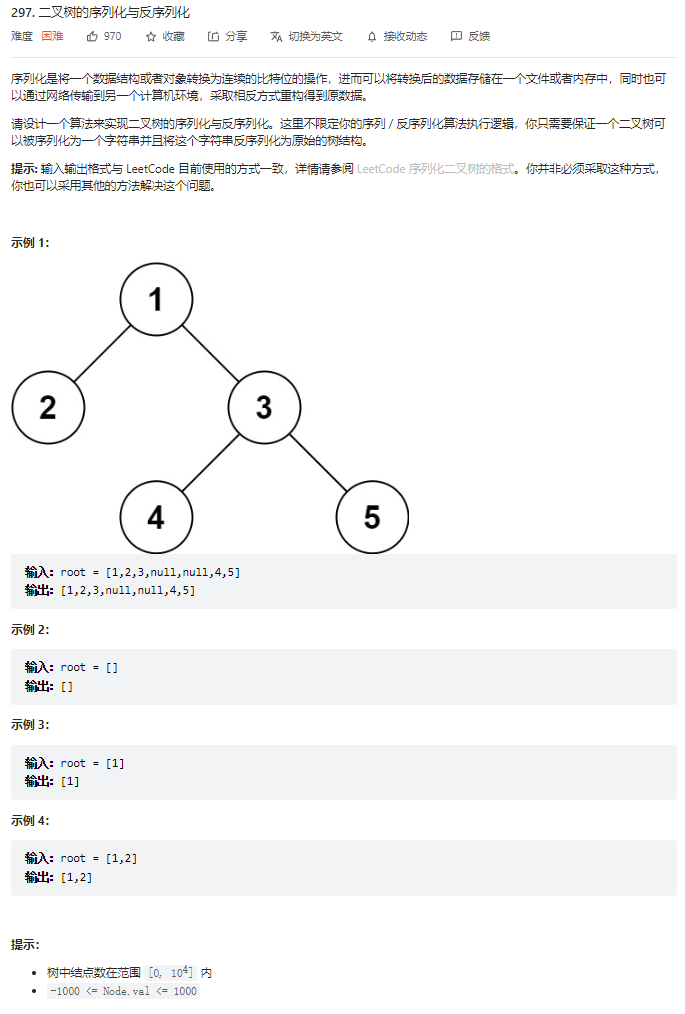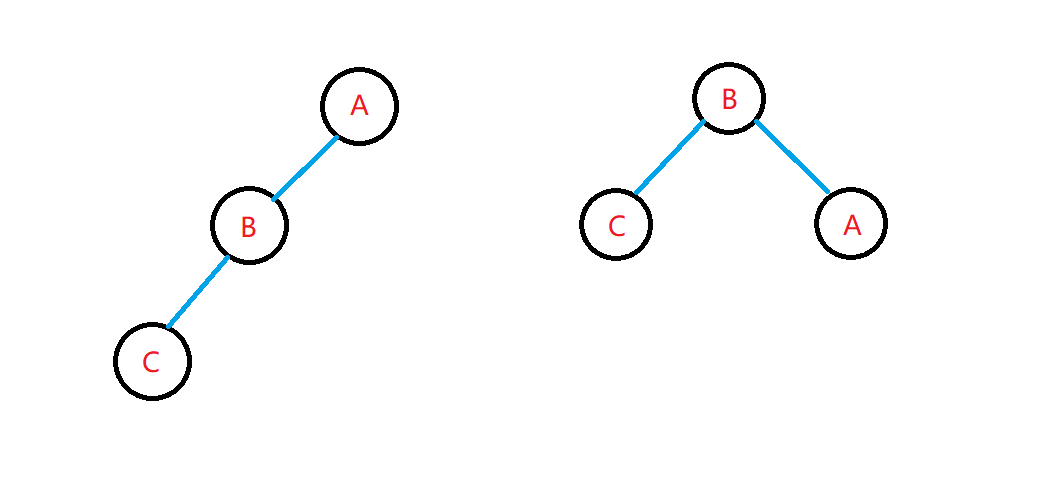
题目分析
在数据通信的过程中,一般传输的类型有byte、short、int、String、byte[],自定义的数据结构如果想传输,则两边需要协商好如何转化,发送方需要将自定义数据编码为字符串或者byte[],而接收方需要将字符串或者byte[]解码为数据结构。这种编解码的过程称之为序列化。
前序遍历
我们使用前序遍历将节点保存下来,如果为null则用字符#代替,两个元素之间用逗号表示。
在反序列化的时候也是前序遍历,先读取根节点,然后再遍历左右子树。
算法的**时间复杂度为$O(n)$,空间复杂度为$O(n)$**。
1 | public class Codec { |
后序遍历
我们扩展一下,看下是否能使用后序遍历呢?答案也是可以的,后序遍历是先访问左子树、再访问右子树、最后访问根节点。
因此从后向前就是先访问根节点,再访问右子树,最后访问左子树。所以idx = 元素个数 - 1,从后向前遍历即可。
算法的**时间复杂度为$O(n)$,空间复杂度为$O(n)$**。
1 | public class Codec { |
中序遍历
中序遍历不行,因为我们不知道哪一个节点是根节点。
举个例子,下图两个树结构的中序遍历都是”#,C,#,B,#,A,#”,无法反序列化成唯一的树结构。
层序遍历
我们使用前序遍历将节点保存下来,如果为null则用字符#代替,两个元素之间用逗号表示。
在反序列化的时候也是前序遍历,先读取根节点,然后再遍历左右子树。
算法的**时间复杂度为$O(n)$,空间复杂度为$O(n)$**。
1 | class Codec { |
刷题总结
序列化的题目难度一般,面试也一般不会考到,但是对于加深对数据结构和递归思想的了解非常有帮助。